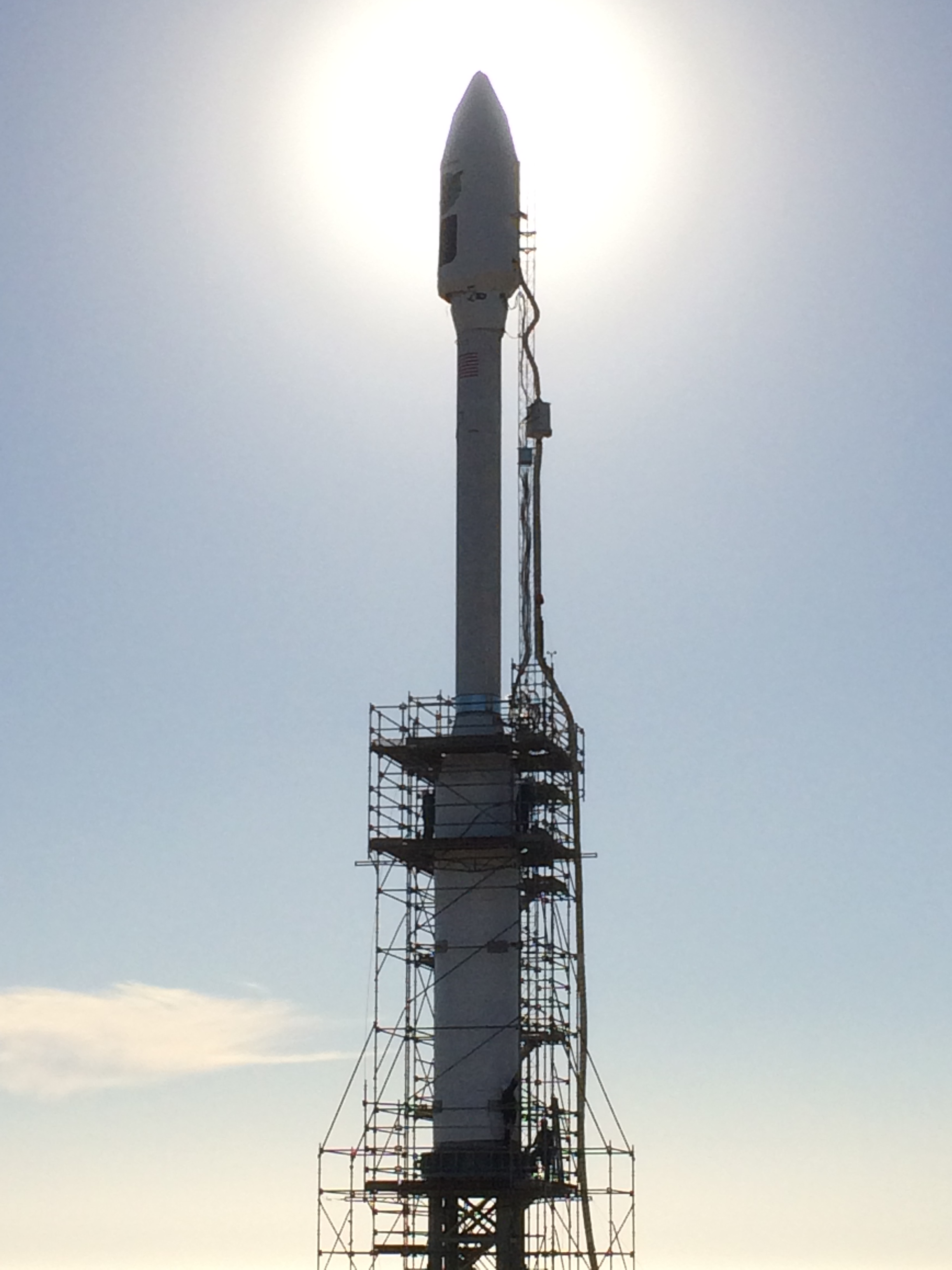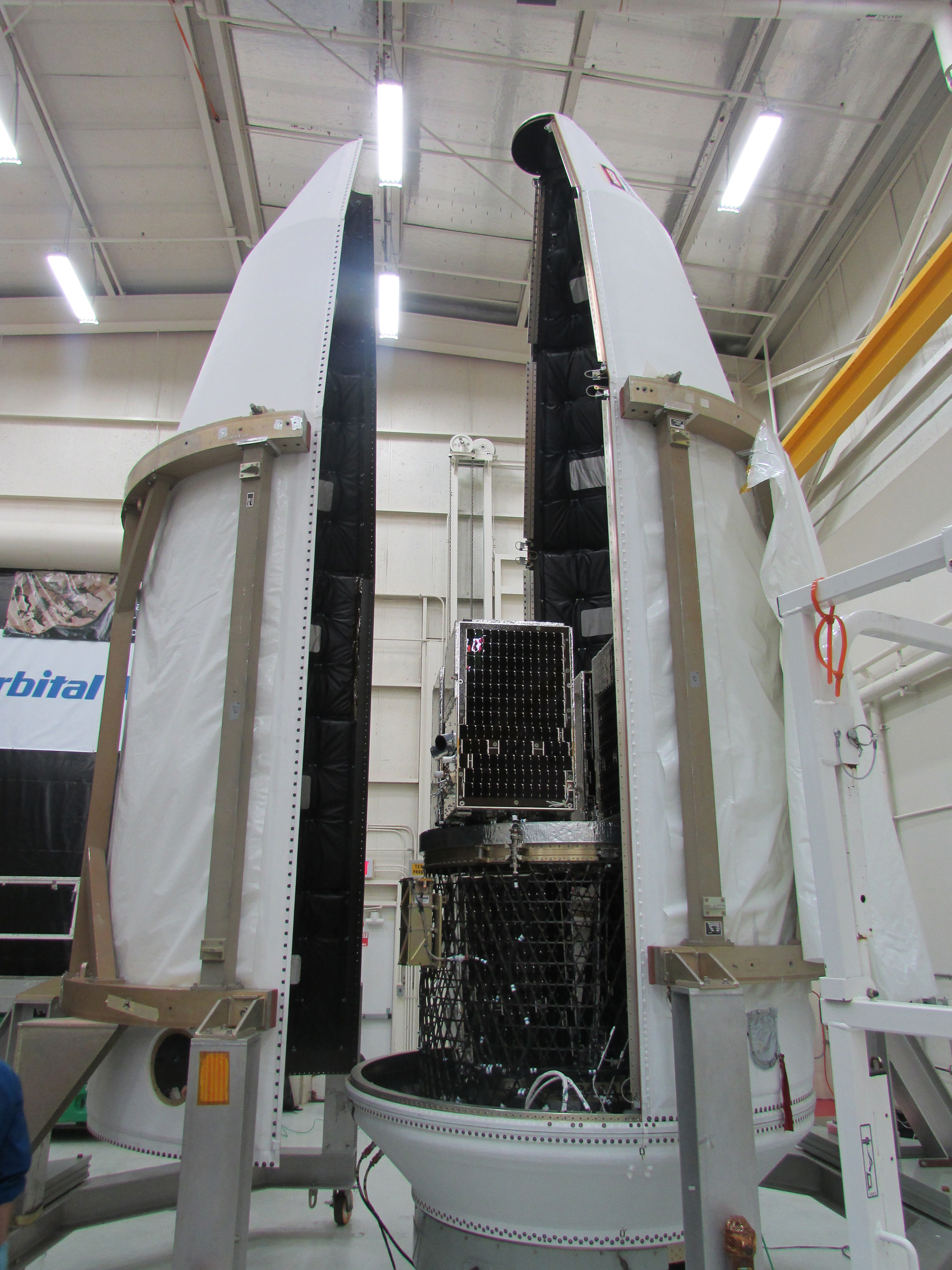Watch a Minotaur (Rocket) Launch to Space This Halloween!

The private spaceflight company Orbital ATK will spend this Halloween launching a Minotaur into space.
Despite its name, this Minotaur is not a half-man, half-bull monster. This one is a brand-new, rebranded rocket that will deliver a suite of Earth-observation satellites into orbit today (Oct. 31).
The Minotaur-C rocket is slated to lift off from Space Launch Complex 576E at Vandenberg Air Force Base in California at 5:37 p.m. EDT (2:37 p.m. local time, 2137 GMT). You can watch the launch live on Space.com here, courtesy of Orbital ATK, starting at 5:17 p.m. EDT (2:17 p.m. PDT/2117 GMT). [Halloween Night Sky 2017: See Celestial Treats!]
You can watch the launch directly from Orbital ATK.

"Green" imaging satellites
Six SkySat Earth-observation satellites and four Dove cubesats — all built by the private commercial imaging company Planet — will hitch a ride into orbit on the Minotaur-C.
"The Dove and SkySat satellites are some of the most capable spacecraft per kilogram ever, capturing medium- and high-resolution multispectral imagery of Earth at unprecedented scale and frequency," Orbital ATK officials said in a statement.
Planet acquired the SkySat constellation from Terra Bella, a Google subsidiary, earlier this year. Following this launch, 13 SkySats will be operating in space. Even more Dove spacecraft are in orbit.
Get the Space.com Newsletter
Breaking space news, the latest updates on rocket launches, skywatching events and more!
"A record-breaking 271 Dove satellites have been successfully deployed and operated in space and today collect more imagery per day than any other commercial provider," Orbital ATK officials said.
The six SkySat satellites are equipped with "green propulsion" technology developed by the Dutch-Swedish company Bradford Engineering's Ecological Advanced Propulsion Systems (ECAPS). "Compared to traditional propulsion, high-performance green propulsion (HPGP) provides higher specific impulse [or change in momentum] and higher propellant density, which results in increased performance" and reduced mission costs, ECAPS states on its website.
"Halloween will be a historic day for 'green propulsion' and a cleaner space," a spokesperson for ECAPS told Space.com in an email. The SkySats' HPGP system helps to increase payload capacity and offers "a high-performance but nontoxic, lower-cost solution," Mathias Persson, business director for Bradford ECAPS, said in a statement.
A rebranded rocket
Orbital ATK's new Minotaur-C rocket is an upgraded and rebranded version of the company's Taurus rocket, and today's launch will be the Minotaur-C's maiden voyage. After the company's Taurus rockets failed to launch during three out of four of the company's most recent attempts, Orbital ATK rebranded and modified the rocket.
The design for the new Minotaur-C rocket borrows existing technologies from Orbital ATK's Minotaur family of rockets. Minotaur-C still looks a lot like a Taurus rocket, but it is revamped with flight-proven avionics, software and other technologies used in the Minotaur rockets. The four-stage, solid-fueled launch vehicle can carry a payload of up to 3,500 lbs. (1,590 kg) into orbit.
"Minotaur-C employs four Orbital ATK solid rocket motors as its propulsion system, all of which have been flown dozens of times and are thoroughly flight-proven in various combinations on the company's other small space-launch vehicles, including Pegasus, Taurus and Minotaur, as well as on the Orbital Boost Vehicle (OBV) long-range missile defense interceptor," Orbital ATK officials said in a statement.
"It will also incorporate numerous design features that are common with the Minotaur product line, such as the rocket's electrical power system, payload fairing, flight-termination system, navigation sensors and RF components," the statement said.
Email Hanneke Weitering at hweitering@space.com or follow her @hannekescience. Follow us @Spacedotcom, Facebook and Google+. Original article on Space.com.
Join our Space Forums to keep talking space on the latest missions, night sky and more! And if you have a news tip, correction or comment, let us know at: community@space.com.

Hanneke Weitering is a multimedia journalist in the Pacific Northwest reporting on the future of aviation at FutureFlight.aero and Aviation International News and was previously the Editor for Spaceflight and Astronomy news here at Space.com. As an editor with over 10 years of experience in science journalism she has previously written for Scholastic Classroom Magazines, MedPage Today and The Joint Institute for Computational Sciences at Oak Ridge National Laboratory. After studying physics at the University of Tennessee in her hometown of Knoxville, she earned her graduate degree in Science, Health and Environmental Reporting (SHERP) from New York University. Hanneke joined the Space.com team in 2016 as a staff writer and producer, covering topics including spaceflight and astronomy. She currently lives in Seattle, home of the Space Needle, with her cat and two snakes. In her spare time, Hanneke enjoys exploring the Rocky Mountains, basking in nature and looking for dark skies to gaze at the cosmos.









